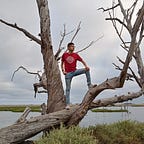My Understanding on The Blockchain
The force behind cryptocurrencies and NFTs
Who hasn’t heard of cryptocurrencies like Bitcoin, Ethereum, or Dogecoin? Perhaps, you have heard about how people transform JPEG images into NFTs to sell them for millions. Well, all of them have something in common. That is the blockchain. It is used to mine cryptocurrencies and to turn the JPEG images into NFTs, aka Non-Fungible Tokens.
The blockchain is an open computer network that gathers information and data from transactions through PCs all over the world. That could even include your PC if you are involved with any of these transactions. So, every time there is a transaction, the computers that make up this network will verify the authenticity of that transaction. Thus, creating a block.
The Blocks
The blocks are made up of the data from those transactions. These blocks are duplicated to other computers throughout the entire network. So, each block is a record of any transaction. Just thinks of each block like your browser history. The only difference is that you can’t completely delete all the data from your transactions. Other blocks contain that information, too.
The decentralized nature of the blockchain makes it very safe when talking about attacks from hackers. A hacker might be able to hack some computers involved with the network. But, it is an impossible task to hack all of them. The only way I can think of doing this is by apocalyptical level threats to humanity.
Also, no government or private group has control over the blockchain. The owners of the blockchain are members of the community. Anyone involved owns a small piece of this giant network.
Proof of Work
The way the blockchain authenticates each transaction is through the system known as proof of work, to validate the transaction through this system the users have to solve complex mathematical problems. And whoever solves it first will be granted the juicy prize in the form of a cryptocurrency or NFT. Just imagine the hardest mathematical problem you had to solve in high school. All right, now multiply its difficulty times a thousand.
So, to save time. Miners like to use graphic cards on their computers. They use them to efficiently solve those problems. Thus, others saw the opportunity to profit and created the mines. Mines are setups of graphic cards connected to many computers that are processing 24/7 the transactions and solving problems from the proof of work system. That process in the community is known as mining. And the people that engage in this process are known as miners.
Two major problems
But, two big problems steam from these mining operations. The first is a shortage of graphic cards from the two biggest providers (AMD and NVIDIA). Thus, the prices skyrocket with the popularity of crypto mining. And that affects not only miners but gamers, too. Before crypto mining hit the mainstream, graphic cards were bought primarily for gaming PCs to improve the performance of video games. Now graphic cards are easily worth more than a thousand dollars from the newer generations.
The second problem is energy consumption and contamination. The mining facilities consume tons of energy. The amount of energy they use is comparable to the energy consumed by entire countries. I am not joking about that much electrical power they use. And that leads to more energy demand. Thus, the consumption of more resources to meet the energy demands. Which in turn, leads to more contamination. Now, this is a vicious cycle with no end.
In the end, I hope that we find new ways to cut down the amount of energy used in these operations. Maybe, something like what they are doing in El Salvador, where they mine bitcoin with volcanic energy. Well, let’s hope that none of those volcanoes become more active anytime soon.
I hope that you find some use for this information. And if you want to have a better understanding of the blockchain, feel free to look for further information online.
